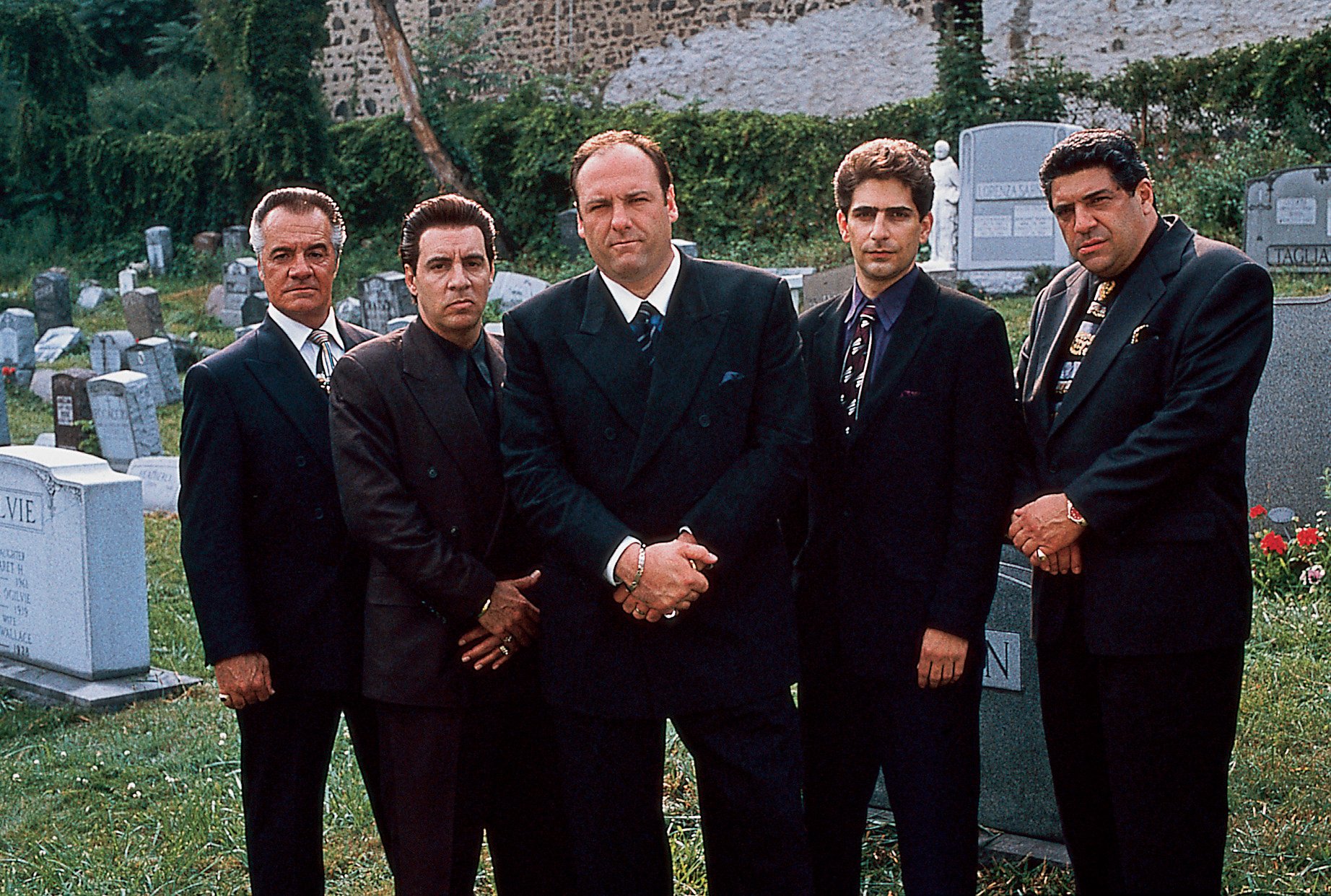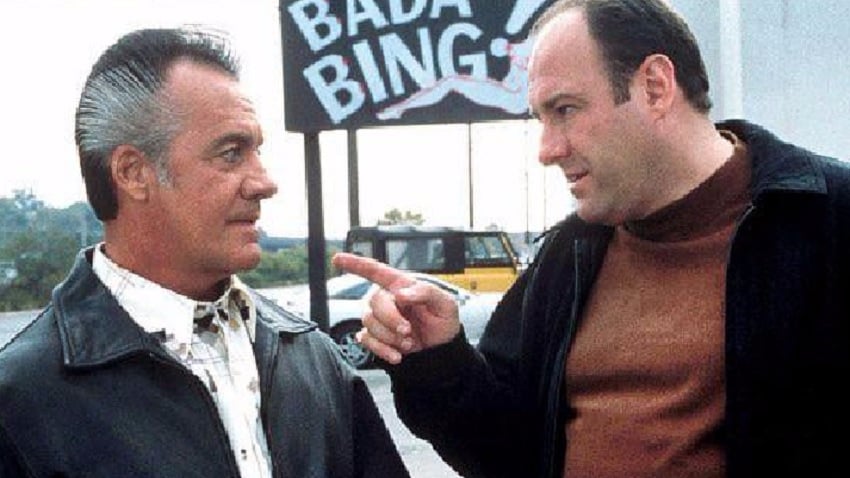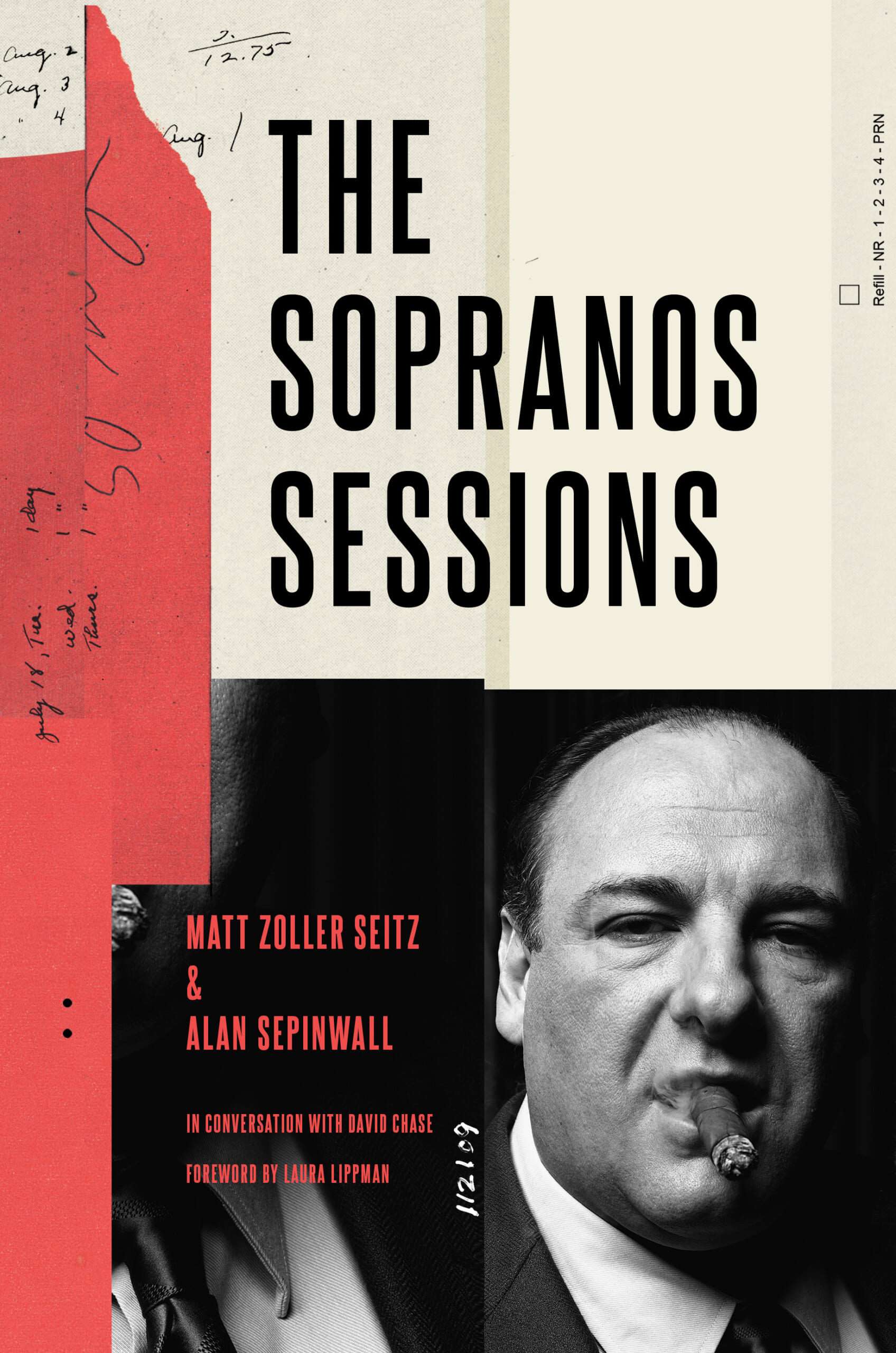Celebrate ‘The Sopranos’ 20th Anniversary With These Surprising Facts
Fascinating details about the greatest TV series ever.


For our new book The Sopranos Sessions, celebrating the 20th anniversary of TV’s most influential drama, we sat down with the show’s creator David Chase for a new series of interviews covering the story from beginning to end. Even though we’d covered the series religiously as TV critics for Tony Soprano’s favorite newspaper, The Star-Ledger, Chase still told us a lot of things that surprised us.
Here, 15 surprising facts you probably never knew about The Sopranos.

1. Before he wrote the show’s actual final scene, Chase had a different sendoff in mind for Tony.
Late in the run of The Sopranos, HBO asked Chase how he wanted to end it. He came up with a possible finale, but not the one he ultimately settled on. Chase: “Tony was going to get called to a meeting with [New York mob boss] Johnny Sack in Manhattan, and he was going to go back through the Lincoln Tunnel for this meeting, and it was going to go black there and you never saw him again as he was heading back, the theory being that something bad happens to him at the meeting. But we didn’t do that.”
Pressed on whether the scene at Holsten’s was “an extension” of the Lincoln Tunnel scene, and that by implication the Holsten’s scene was as death for Tony, Chase replied, “No, it’s not, because I went away from that…If you were producing that [tunnel scene], you’d say, ‘Well, obviously, he’s a gangster, and his death means the end of the show, so he should die’…But in the end, I decided I didn’t want to do that. Otherwise I would’ve filmed him going to the meeting with Johnny.”
2. Ralphie Cifaretto was originally going to be played by Robert Funaro, who was recast as doomed Family soldier Eugene Pontecorvo after Joe Pantoliano was hired to replace him.
Chase: “[Casting Funaro] was Jim [Gandolfini]’s suggestion. He’d worked with [Funaro] as a young actor, and then we tried it and began to realize it wasn’t going to work, so before we started shooting, we replaced him.”
3. HBO passed on the chance to make the upcoming Sopranos prequel movie due to a “corporate complication.”
The interviews for The Sopranos Sessions concluded shortly before New Line announced a greenlight for The Many Saints of Newark, a ‘60s-set feature film taking place in the Sopranos universe. (Presumably, based on the title, it’ll be about Christopher Moltisanti’s father.) When we asked Chase about the idea of revisiting Johnny Boy Soprano and Uncle Junior’s heyday, which he’d talked about in the past, he told us he had actually written a script and submitted it to HBO, but they said no: “It was a corporate complication. But HBO should not be blamed for this.”
4. Tony Blundetto was supposed to live past season 5, even though Chase wasn’t sure what he’d have done with the character after that.
Steve Buscemi signed on to play Tony’s cousin with the intention of sticking around through the end of the series. But after Tony B murdered the brother of New York capo Phil Leotardo, Chase and the writers realized there was no way the character could survive his initial season. At various points, Chase had mused about Tony B becoming a trusted advisor to our Tony, or his final nemesis. “I just knew that whatever we did, it would be really good. [Steve Buscemi] would carry it off and it would be terrific, because he’s such a great actor. And I wanted to experience that and have it. But we just couldn’t justify it.”
5. Adriana died off-camera because Chase felt so much affection for the character that he didn’t want to see her being killed.
Chase: “I’ve thought about it a lot, the fact that you don’t see her get shot. I guess it just felt wrong. It’s probably something that I didn’t want to see. I liked that character too much. She’d suffered enough. And she wasn’t pretentious. She was not a phony intellectual. She was just trusting, sobbing-prone. She was innocent.”
6. The show was constantly combatting spoilers — including leaks from inside the production.
Chase: “We were really paranoid about it. There was also suspicion about people within the crew that somebody was a [rat]. It was ugly.” Chase’s assistant Jason Minter was assigned to chase down the source of the leaks, which were most egregious around the time of Adriana’s death. Although he didn’t manage to unmask the leaker at the time, “…about two years ago, I learned who the person was in passing, and it was a senior crew member—like a department head. And they were making a fortune from selling stories to The National Enquirer—thousands and thousands of dollars. There were photographs taken from production, so I would try to figure out who was there on that day, and I would always get derailed. I never in a million years suspected it would have been that person.”
7. Chase didn’t decide to make Big Pussy a rat until after season 1 was completed.
Chase: “I never thought we were coming back for a second season, so I was in no way prepared for that. The season ended, and I went on vacation, came back, and I knew the show was liked a lot but I didn’t know whether they’d renew it or not. I knew nothing about anything. And I came back and all I knew was that everyone was saying, ‘Where is Pussy?’ I thought, ‘Now what?’ We had to have a plot, and they’re already going ‘Where’s Pussy?’ so we have to figure out where he is, and then we got interested in the whole question of Stockholm syndrome, and Pussy becomes a junior G-man, inflated by his own stuff. That’s how it came about, because we had to do something.”
8. It was Chase’s idea for Richie Aprile to die before he could have a showdown with Tony.
Chase: “We were sitting in the writer’s room one day and I said, ‘How about if Janice does it in episode twelve?’ I was thinking about their relationship and the whole thing. That makes me sound gimmicky—like, ‘Oh, they’ll never see this coming.’ It wasn’t about that. It was about, ‘Oh, this will be really good. If Aida [Turturro] does it, this will be really good.’”
9. Carmela might have slept with another man much sooner than season five if a Sopranos writer hadn’t continually objected.
Chase: “There were always some sort of personal issues having to do with Carmela and what she would do, or not, or what she was going to do. I was in conflict with [screenwriter] Robin [Green] very often about Carmela and what she was doing or what she would be capable of, what she should be, and I would get very frustrated with the whole argument, and finally I was like, ‘Fuck it, I don’t want to talk about it anymore.’ And I began to grow concerned, after five seasons, about that aspect of Carmela. In the same way I got concerned later about how long it took Tony to kill Christopher, I felt that way about Carmela taking a lover. I thought, ‘This should’ve happened a long time ago, what is she, a dishrag?’ or something like that.”
10. The show officially has six seasons, but Chase thinks of it as having seven.
The sixth “season” aired in two chunks, nearly a year apart, and were produced separately as well. But HBO labeled them all as one season to avoid giving too many people — “The actors, specifically,” Chase admitted — their guild-mandated raises for each new season.
11. Carmela has her season six epiphany about the temporariness of life in France instead of Italy because of Chase and his wife Denise’s personal connections to France.
The Chases attended French films regularly in the 1970s because Denise Chase’s mother is French and speaks the language. The couple visited Paris for the first time in 1977 and fell in love with it. “It was the first time either of us had been out of this country. And I don’t know about you, but when I got there, I said to myself, ‘I’ve been to this place before. I don’ t know this city, but I’ve been here before.”
12. The details of A.J. Soprano’s suicide attempt were drawn from life.
“Nobody [in the writer’s room] came up with it. [It happened to] someone we knew. Their son did this.” The young man lived.
13. When characters got killed on the show, the other actors would tease them about it.
“It was there way of handling what was stress, I think,” Chase told us. “The one that I remember was the read-through for the show where Mikey Palmice dies. That actor [Al Sapienza] campaigned vigorously to stay on the show: he really didn’t want to go. We were gathering for the read-through and [Tony] Sirico came in, and I forget what the comment was, but Al Sapienza said he just really didn’t want to go, something like that, and Sirico went [finger guns] Dat dat dat dat dat. Because hes the one who kills him!
14. The season five episode “The Test Dream” is inspired by a recurring dream of Chase’s.
“I’m going to direct something, and people say to me, ‘Are you prepared to shoot scene forty-two?’ ‘No, I don’t need to.’ ‘It’s not that big of a deal. I don’t need to shot-list it,’ there’s a lot of that. Then, the day comes when I’m supposed to shoot it, and the truth is I’ve never even read the scene…I have no idea, and I’m in no way prepared.”
15. Chase prefers reading negative reviews of his work before positive ones, “because it’ll get me charged up.”
“Why do you like to pick fights? Why do you have an argument with your wife? This is not only for me, but it’s friends of mine in the business and people you know. We scan those things for negative reviews so we get pissed off.”
The Sopranos Sessions is on sale now.







